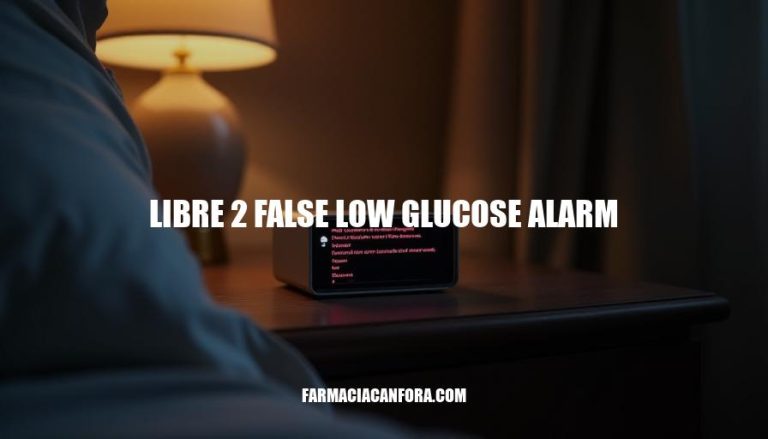


The Libre 2 Continuous Glucose Monitoring (CGM) system is a popular tool for managing diabetes, offering real-time glucose readings without the need for finger pricks. However, some users experience false low glucose alarms, where the system incorrectly signals low blood sugar levels. This issue can lead to unnecessary stress and frequent interruptions, impacting the overall user experience. Understanding and addressing these false alarms is crucial for accurate diabetes management and maintaining peace of mind.
A Libre 2 false low glucose alarm occurs when the FreeStyle Libre 2 continuous glucose monitor (CGM) incorrectly indicates that your blood glucose level is lower than it actually is.
Common scenarios for these false alarms include:
Here are the various factors that can lead to a ‘Libre 2 false low glucose alarm‘:
Sensor Placement Issues: Incorrect placement of the sensor can lead to inaccurate readings. The ideal spot is the back of the upper arm, avoiding areas with scars, moles, or other skin irregularities.
Compression Lows: Pressure on the sensor, such as when sleeping on it, can cause false low readings. This is often referred to as a “compression low”.
Temperature-Related Errors: Extreme temperatures can affect the sensor’s accuracy. Both high and low temperatures can cause the sensor to give false low glucose readings.
Lag Time Between Blood and Interstitial Fluid Glucose: The Libre 2 measures glucose in the interstitial fluid, which can lag behind blood glucose levels, especially during rapid changes like after meals or intense exercise.
Interference from Medications: Certain medications can interfere with the sensor’s readings, leading to false lows.
Sweating or Moisture: Excessive sweating or moisture can affect the sensor’s adhesive and its ability to accurately measure glucose levels.
Skin Creams or Alcohol Swabs: Substances applied to the skin, such as creams or alcohol swabs, can interfere with the sensor’s function.
Experiencing a false low glucose alarm with the FreeStyle Libre 2 can lead to several potential consequences:
Unnecessary Stress: False alarms can cause significant anxiety and stress, as users may believe they are experiencing a hypoglycemic event when they are not. This can lead to a heightened state of alertness and worry, impacting overall mental well-being.
Disruption to Diabetes Management: Frequent false alarms can disrupt the routine management of diabetes. Users might overcorrect by consuming unnecessary carbohydrates, leading to hyperglycemia. This can make it challenging to maintain stable blood glucose levels.
Sleep Disturbance: Nighttime false alarms can interrupt sleep, leading to fatigue and decreased quality of life. Consistent sleep disruption can also affect glucose control and overall health.
Reduced Trust in Technology: Repeated false alarms may cause users to lose trust in the device, potentially leading them to ignore genuine alarms. This can be dangerous if a real hypoglycemic event occurs and is not addressed promptly.
Increased Healthcare Costs: Managing false alarms might require additional glucose testing supplies and more frequent consultations with healthcare providers to address concerns and adjust management plans.
These consequences highlight the importance of accurate glucose monitoring and the need for users to verify readings with traditional methods when in doubt.
Here are some practical tips to minimize false low glucose alarms with the FreeStyle Libre 2:
Proper Sensor Placement:
Avoid Compression:
Check for Interference:
Monitor Sensor Adhesion:
Temperature Considerations:
Implementing these strategies can help reduce the occurrence of false low glucose alarms and improve the reliability of your readings.
The Libre 2 Continuous Glucose Monitoring (CGM) system is prone to false low glucose alarms, which can cause unnecessary stress, disrupt diabetes management, and lead to various consequences.
These alarms occur due to factors such as sensor placement issues, compression lows, lag time between blood and interstitial fluid glucose, temperature-related errors, interference from medications, sweating or moisture, and skin creams or alcohol swabs.
To minimize false low glucose alarms, it is essential to follow proper sensor placement, avoid compression, check for interference, monitor sensor adhesion, perform regular calibration, and consider temperature factors.
Accurate glucose monitoring is crucial for effective diabetes management, and users should verify readings with traditional methods when in doubt.